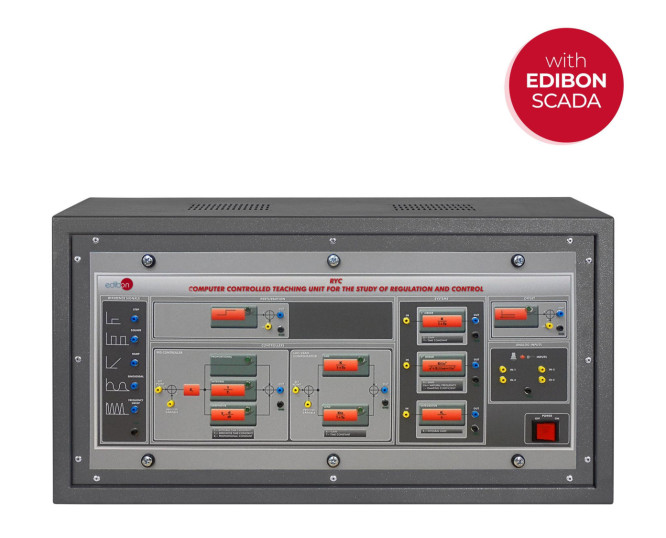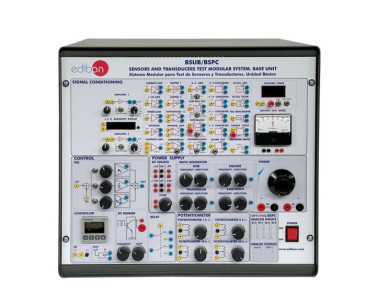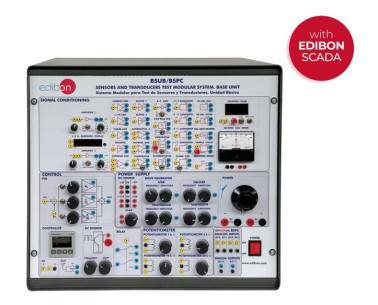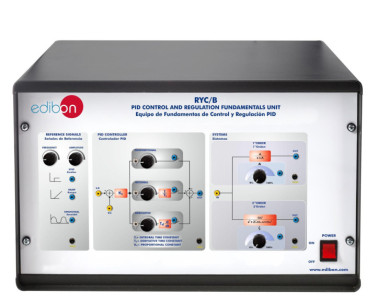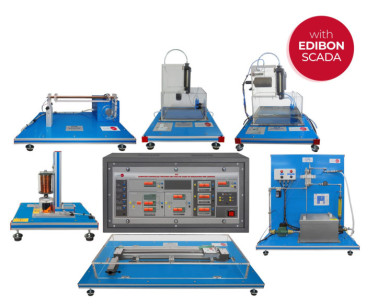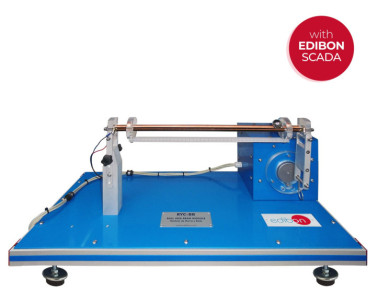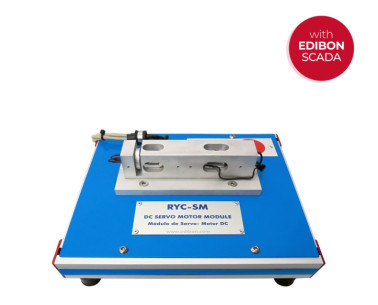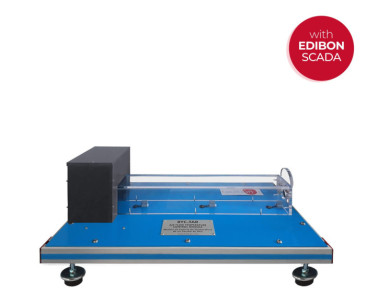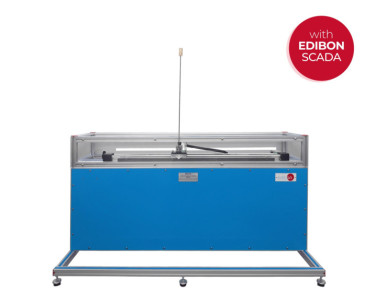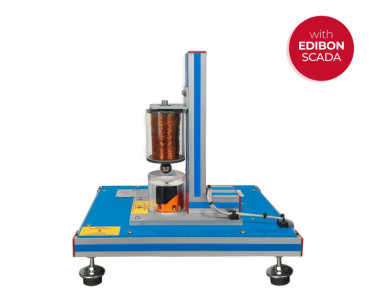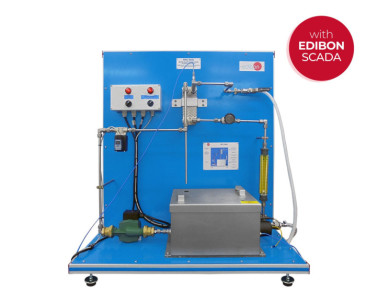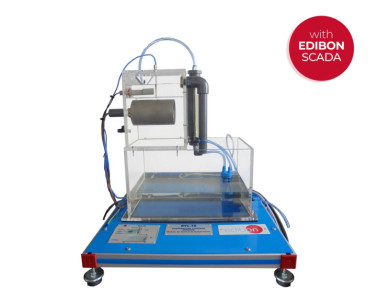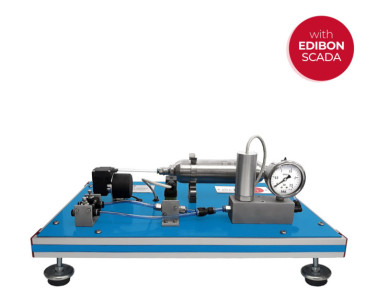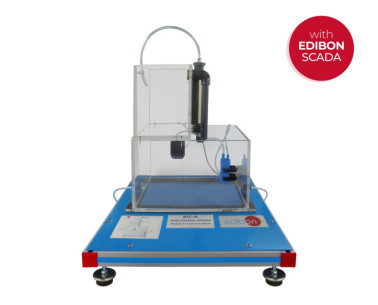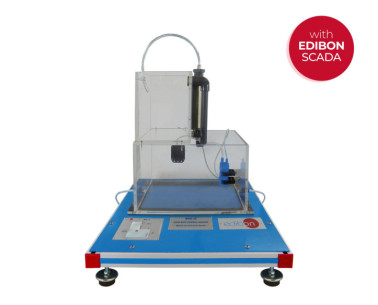RYC 用于调节和控制研究的计算机控制教学设备
創新系統
The Teaching Unit for the Study of Regulation and Control, "RYC", is designed by EDIBON. It allows students to learn the most important concepts about Regulation and Control in an easy and comprehensive way.
扩展
化验室
相關新聞
一般說明
Regulation and control theory is divided into two major divisions in, namely, classical and modern. The implementation of classical controller designs as compared to systems designed using modern control theory is easier and these controllers are preferred in most industrial applications. The most common controllers designed using classical control theory, are PID controllers.
The Teaching Unit for the Study of Regulation and Control, "RYC", allows the students to simulate an integrator system, a first order system and a second order system and regulate them with a PID controller or Lead and Lag compensator. The unit also allows to simulate perturbations and offsets to analyze the response of the system.
A wide range of applications: PID Control and Regulation Unit for a DC Servomotor, PID Control and Regulation Unit for a Ball and Beam System, etc. for working with the unit are available to study a real control systems response to complement the Study of regulation and control in real time.
This Computer Controlled Unit is supplied with the EDIBON Computer Control System (SCADA), and includes: The unit itself + a Data Acquisition Board + Computer Control, Data Acquisition and Data Management Software Packages, for controlling the process and all parameters involved in the process.
練習和指導練習
手册中包含的指导实践练习
Practical possibilities to be done with the Unit for the Study of Regulation and Control (RYC):
- Response of a first order system in time domain. (Step response).
- Response of a first order system in time domain. (Ramp response).
- Response of a first order system in time domain. (Sine response).
- Response of a first order system in frequency domain. (Sine response).
- Response of a second order system in time domain. (Step response).
- Response of a second order system in time domain. (Ramp response).
- Response of a second order system in time domain. (Sine response).
- Response of a second order system in frequency domain (Sine response).
- Phase Lead Compensator experiment.
- Phase Lag Compensator experiment.
- Structure of a PID controller. (Proportional-Integrative- Derivative blocks).
- PID control of a first order system in open-loop.
- PID control of a second order system in open-loop.
- PID control of a first order system in closed-loop. (Mathematical tuning).
- PID control of a first order system in closed-loop. (Experimental tuning).
- PID control of a first order system in closed-loop. (Ziegler-Nichols tuning).
- PID control of a second order system in closed-loop. (Mathematical tuning).
- PID control of a second order system in closed-loop. (Experimental tuning).
- PID control of a second order system in closed- loop. (Ziegler-Nichols tuning).
Practical possibilities to be done with the additional recommended elements (Not included), for working with RYC unit:
PID Control and Regulation of a Ball and Beam System Unit (RYC-BB):
- DC motor position control with a PID controller.
- Ball and Beam control (RYC-BB) with a lead compensator and a PID controller (cascade control).
PID Flow Control and Regulation Unit (RYC-C):
- Familiarization with the main unit components.
- Analyze the transient response of the system.
- Analyze the system response in open loop.
- Analyze the system response in closed loop.
- Flow rate control with a P, PI, PD and PID controller.
- Setting and optimizing the parameters of the PID control.
- Analysis of the different responses of the system to modifications of PID parameters.
- Study of the disturbances in a controlled system with a PID controller.
PID Magnetic Levitation Control and Regulation Unit (RYC-CLM):
- Characterization of the electrical subsystem.
- PID control of the electrical subsystem.
- PID control of the ball position.
PID Position Control and Regulation of a Motor Unit (RYC-CP):
- Characterization of a speed control system.
- PID control of the motor speed.
- Characterization of a position control system.
- PID control of the carriage position.
PID Control and Regulation of Light Intensity Unit (RYC-I):
- Familiarization with the main unit components.
- Study the photoresistor characteristics.
- Study the phototransistor characteristics.
- Study the photodiode characteristics.
- Analyze the transient response of the system.
- Analyze the system response in open loop.
- Analyze the system response in closed loop.
- Luminosity control with a P, PI, PD and PID controller.
- Setting and optimizing the parameters of the PID control.
- Analysis of the different responses of the system to modifications of PID parameters.
- Study of the disturbances in a controlled system with a PID controller.
PID Level Control and Regulation Unit (RYC-N):
- Characterization of the level in a tank.
- Control of the level of a tank using a PID controller.
- Disturbance rejection using a PID controller.
PID Control and Regulation of Pressure Level Unit (RYC-P):
- Characterization of the PID Control and Regulation of Pressure Level Unit (RYC-P).
- PID Control and Regulation of Pressure Level Unit (RYC-P) with a PID control.
PID Control and Regulation of pH Level Unit (RYC-pH):
- Familiarization with the main unit components.
- Analyze the transient response of the system.
- Analyze the system response in open loop.
- Analyze the system response in closed loop.
- pH level control with a P, PI, PD and PID controller.
- Setting and optimizing the parameters of the PID control.
- Analysis of the different responses of the system to modifications of PID parameters.
- Study of the disturbances in a controlled system with a PID controller.
PID Control and Regulation of an Inverted Pendulum Unit (RYC-PI):
- Characterization of a speed control system.
- PID control of the motor speed.
- Characterization of a position control system.
- PID control of the cart position.
- PID control of the pendulum position.
PID Control and Regulation of a DC Servomotor Unit (RYC-SM):
- Characterization of a DC motor (speed).
- DC motor speed control with a PID controller: open-loop.
- DC motor speed control with a PID controller: closed-loop.
- Characterization of a DC motor (position).
- DC motor position control with a PID controller: closed-loop.
PID Temperature Control and Regulation Unit (RYC-TE):
- Characterization of the temperature in a tank.
- Control of the temperature of a tank using a PID controller.
PID Temperature Control and Regulation of Water Flow Unit (RYC-TAG):
- Characterization of the PID Temperature Control and Regulation of Water Flow Unit (RYC-TAG).
- Water Flow Temperature Control with a PID control.
PID Temperature Control and Regulation of Air Flow Unit (RYC-TAR):
- Characterization of the PID Temperature Control and Regulation of Air Flow Unit (RYC-TAR).
- PID Temperature Control and Regulation of Air Flow Unit (RYC-TAR) with a PID control.
与该单位进行更多实际操作
- Many students view results simultaneously. To view all results in real time in the classroom by means of a projector or an electronic whiteboard.
- Open Control, Multicontrol and Real Time Control. This unit allows intrinsically and/or extrinsically to change the span, gains, proportional, integral, derivative parameters, etc, in real time.
- This unit is totally safe as uses mechanical, electrical and electronic, and software safety devices.
- This unit can be used for doing applied research.
- This unit can be used for giving training courses to Industries even to other Technical Education Institutions.
- Control of the RYC unit process through the control interface box without the computer.
- Visualization of all the sensors values used in the RYC unit process.
- Several other exercises can be done and designed by the user.
可用的类似设备
基础单元BS,通过计算机(PC)控制
配套设备
PID控制与调节基础设备
Computer Controlled Modular Control and Regulation Unit
用于杆-球系统的PID控制与调节设备
用于直流伺服电机的PID控制与调节设备
用于气流温度的PID控制与调节设备
倒立摆的PID控制与调节设备
用于磁悬浮的PID控制与调节设备
用于水流温度的PID控制与调节设备
用于温度的PID控制与调节设备
压力水平的PID控制与调节设备
用于液位的PID控制与调节设备
用于流量的PID控制与调节设备
質量

售後服務

 Cookies首选项
Cookies首选项

